08 July 2025
“He is not missing, he is here”: Stories from the Menin Gate Memorial
Discover some of the stories behind the names as we spotlight the men commemorated by the Ypres (Menin Gate) Memorial.
Stories from the Menin Gate
Legacies carved in stone

Image: Examining the Menin Gate's moving name panels
The men commemorated by the memorial sadly have no known war grave. Their remains were never recovered and may still lie upon the former WW1 battlefields of the Ypres Salient.
The Ypres (Menin Gate) Memorial stands as a permanent point of commemoration for these missing Great War servicemen. For nearly a century, it has stood as an enduring symbol of the loss of so many from across the world.
Over 54,000 names are inscribed upon the Menin Gate’s cold stone panels. Each one was a real person: a man with their own hopes, dreams, and aspirations.
From politicians to decorated heroes to potential gruesome atrocity victims, we share some of the stories the officers and enlisted men commemorated by the Menin Gate Memorial.
If you have a story to tell of a casualty in our care, please share it on For Evermore, our online stories archive, so it can be preserved eternally.
Men of the Menin Gate
The men of the Menin Gate represent the huge international effort undertaken to win the First World War. Five Commonwealth nations are represented here: the United Kingdom, India, Canada, Australia, and South Africa.
Around 200,000 servicemen were killed on both sides throughout the Ypres Salient. Almost a quarter of the sector’s war dead are commemorated on the Menin Gate.
Brigadier-General Charles FitzClarence VC
 Image: Brigadier-General Charles FitzClarence VC (Public domain)
Image: Brigadier-General Charles FitzClarence VC (Public domain)
Brigadier-General Charles FitzClarence VC is the highest-ranking serviceman commemorated by name by the Ypres Menin Gate. He was one of several high-profile casualties lost during the First Battle of Ypres.
FitzClarence was born in Bishopcourt, County Kildare, the son of Captain George FitzClarence and his wife Mary. He was also the grandson of the 1st Earl of Munster. He started his military career in 1886, joining the Royal Fusiliers, but recurring bouts of illness hampered his career progress.
As such, FitzClarence performed mostly administrative and staff roles until he volunteered as a Special Service Officer at Mafeking in South Africa during the Second Boer War.
In 1889, the young officer performed several actions, including the defence of an armoured train and subsequent counterattack, a trench raid, and gallant leadership at Game Tree, which saw him awarded the Victoria Cross.
His ferocity in battle earned FitzClarence the nickname “The Demon”.
At the time of the First World War, FitzClarence replaced Brigadier-General Ivor Maxse as commander of the 1st Guards Brigade.
Journalist and writer Captain Valentine Williams MC described FitzClarence and the Guards’ role at First Ypres in Blackwood’s Magazine:
“The Coldstream and Scots Guards' battalions of FitzClarence's brigade, in trenches north of Gheluvelt, suffered terribly in a German attack, delivered in a dense mist on the morning of the 27th along the Menin Road.
“The odds against the British were crushing, for on that day some 24,000 Germans were arrayed against about 5,000 exhausted British troops.
“In two days, the Scots Guards lost 10 officers, and 370 men killed and wounded. But the result of the day's fighting was that the British line stood firm and unbroken, while the Germans had sustained enormous losses”
Unfortunately, FitzClarence, despite his fighting spirit and inspired leadership, would not survive First Ypres. He was killed during the Prussian Guards’ attack on 11 November 1914, when, leading from the front, he was struck down by a burst of rifle fire.
Sergeant Harry Band
 Image: Sergeant Harry Band (Canadian Virtual War Memorial)
Image: Sergeant Harry Band (Canadian Virtual War Memorial)
Sergeant Harry Band’s story is an interesting one, insofar as it may not be his story at all.
We do know that Harry was born in Montrose, Scotland, in August 1885. At some point, he emigrated to Canada as he enlisted in Valcartier, Quebec in September 1914.
At the time of his death, Harry was serving as a Sergeant with the 48th Regiment (Highlanders), Canadian Infantry (Central Ontario Regiment). He went missing in action, presumed killed, on 24 April 1915.
What makes his story remarkable is the possibility that he may have been the infamous “Crucified Soldier.”
During the Great War, disturbing stories were circulated amongst Allied troops of a Canadian soldier crucified with bayonets to a barn door or tree.
Three separate eyewitness accounts attested to the presence of a crucified Canadian infantryman in the Ypres Region in early 1915. The matter was even raised several times in Parliament.
However, the eyewitness accounts were contradictory. Many could not agree if the unfortunate Canadian soldier had been tied to a tree and stabbed, physically impaled using bayonets, or if he was even stuck to a tree or a barn door. Some other accounts say the victim was British, too.
While contemporary investigations were launched, no crucified body was ever found.
The story has gone on the be an example of wartime propaganda used to stir emotions to support the war effort.
In 2002, British documentary filmmaker Iain Overton investigated the story of the Crucified Soldier as part of Channel 4’s Secret History series. For the programme, Overton uncovered new historical evidence that the victim was Sergeant Harry Band.
According to Overton, other soldiers in Band’s unit wrote to Harry’s sister, Elizabeth Petrie, confirming his fate as the Crucified Soldier.
Overton’s evidence also includes a typewritten note from Miss Ursula Violet Chaloner, a British nurse, containing comments by Lance Corporal CM Brown to his nurse. According to the note, Lance Corporal Brown informed Ms Chaloner of the story of Sergeant Harry Band, who was “crucified after a battle of Ypres on one of the doors of a barn with five bayonets in him.”
Whatever the truth, the tale of the Crucified Soldier is an interesting reminder of the power of storytelling and propaganda.

Want more stories like this delivered directly to your inbox? Sign up for our newsletter for regular updates on the work of Commonwealth War Graves, blogs, event news, and more.
Sign UpSecond Lieutenant Euan Lucie-Smith
 Image: Second Lieutenant Euan Lucie-Smith (Public domain)
Image: Second Lieutenant Euan Lucie-Smith (Public domain)
Jamaican-born Euan Lucie-Smith holds the unique distinction of being the first British officer of mixed background to die in World War One.
The son of Jamaica’s postmaster, Euan joined the Royal Warwickshire Regiment shortly after war broke out in Europe. He reached England in 1914, trained on the Isle of Wight, and joined his regiment’s 1st Battalion on the continent on 17 March 1915.
In just over a month, Euan was in action. It would be his first and only time.
The Royal Warwickshire’s War Diary for 24-25 April 1915 reads: “Orders were received to advance at 4 pm [on the 24th] via Vlamertinghe and halted outside Ypres from 8 pm to midnight. Started to rain. Ypres was heavily shelled and on fire.”
The Warwickshires attacked into this hellish landscape at 4.30 am.
The Royal Warwickshire war diary describes the action: “We attacked the wood on the left of the line with the 7th Argyll and Sutherland Highlanders, the Seaforth Highlanders, Royal Irish Fusiliers, Royal Dublin Fusiliers, attached to our right on St Julien.
“Owing to the German trenches being insufficiently shelled and support unable to come up the line retired at about 7 am to trenches near the farm. Our casualties were very heavy: 17 officers, 500 other ranks, killed, wounded, or missing.”
Unfortunately, Euan was amongst the 17 officers listed as casualties during the attack. According to the Royal Warwickshire war diary, Euan was recorded as “Missing, probably killed.”
An eyewitness report suggests Euan died after being shot in the head.
By the time of his death, Euan had reached the rank of Lieutenant, one of the first black officers to serve during World War One.
Captain The Hon. Arthur Edward Bruce O’Neill
 Image: Captain The Hon. Arthur Edward Bruce O'Neill (Public domain)
Image: Captain The Hon. Arthur Edward Bruce O'Neill (Public domain)
Arthur O’Neill was born into the prominent O’Neill family from County Antrim in Northern Ireland, the second but oldest surviving son of Edward O’Neill, 2nd Baron O’Neill, and his wife Lady Louisa, on 19 September 1876.
Arthur joined the British Army in May 1897, joining as a Second Lieutenant in the 2nd Regiment of Life Guards. He was promoted to Lieutenant a year later. Before his full military service, Arthur had served with the 4th Militia Battalion of the Argyll and Sutherland Highlanders.
With the Life Guards, Arthur served in South Africa during the Second Boer War, taking part in the relief of Kimberly and operations across the Orange Free State, Cape Colony, and elsewhere.
For his South African service, Arthur was awarded the Queen’s South Africa medal with three clasps. He was promoted to Captain in 1902 and served as regimental adjutant for a year.
The O’Neills had a long tradition of political participation and activity in Antrim. Arthur’s father Edward had sat for the constituency between 1863 and 1880.
Antrim was split into four different constituencies in 1885, with Arthur’s uncle Robert O’Neill sitting for Mid-Antrim. In 1910, when Robert stood down, Arthur was elected without contest in the General Elections of 1910, filling his uncle’s vacant seat.
“Musical, a good shot, and fond of all sports”, Arthur was a rare contributor to parliamentary debate. His first major speech in June 1910 covered alterations to army regulations which affected officers who were also MPs.
According to the speech, Arthur was “very glad to think that we in this House may be called upon compulsorily to serve on active service”. Arthur and many other MPs would soon find themselves plunged into military service when war broke out in August 1914.
Arthur re-joined his unit as a Captain and soon was serving on the Western Front. Sadly, he would never return home.
Arthur was killed in action on 6 November 1914 at Zillebeke near Ypres. According to one report, Arthur “fell while leading his men in a most gallant attempt to save a situation.
“He was shot on the Klein Zillebeke Ridge, near Ypres, and shouting to his men to line the ridge, [he] was being carried out when he received another wound and then begged his bearers to leave him and save themselves. He did not know what fear was.”
Arthur’s son, Shane, succeeded his grandfather in the barony until he was killed in action during the Second World War. His third son, Terrence, served in the now-defunct office of Prime Minister of Northern Ireland between 1963 and 1969.
Visit Commonwealth War Graves in Ypres

Our Ieper visitor centre stands at the heart of commemoration in Belgium, directly across from the Menin Gate. It forms the perfect starting point when visiting the WW1 battlefields and the cemeteries and memorials where those who fell are today commemorated. Our multilingual team are on hand. You can:
- Discover more about our cemeteries and memorials in Ieper and the work of our teams in Belgium and around the world.
- Enjoy some relaxing refreshments in the cosy surroundings of our brand new tea house Blomfield’s
- Purchase souvenirs from our gift shop. All proceeds are directly invested in our educational and outreach projects worldwide.
- Purchase your biodegradable wreath – we can even keep it safe for you until the Last Post.
- Undertake research on the CWGC database – you can discover if we commemorate your relative or let us assist you with a research project and help find the graves you’re looking for.
- Join a guided tour of the Menin Gate - learn more about the iconic memorial and discover some of the stories of the Commonwealth casualties commemorated there.

